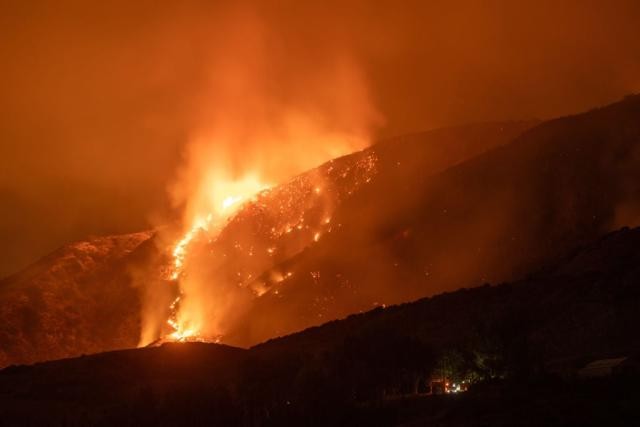
California's wildfires are not only growing larger but also spreading at an alarming rate, according to recent research. This escalating speed poses a severe threat to communities and ecosystems across the state.
A comprehensive study published in the journal Science analyzed NASA satellite data on 60,000 wildfires across the contiguous United States from 2001 to 2020. The researchers focused on the maximum daily growth rate of each fire, revealing a worrying trend: wildfire spread rates have been steadily increasing over time, particularly in California and other Western states.
The implications of this acceleration are profound. The study found that the fastest-spreading fires, comprising just 2.7% of all blazes, were responsible for a disproportionate amount of destruction:
- Nearly 80% of structures destroyed
- Two-thirds of wildfire-related fatalities
- Over 60% of fire suppression costs
These statistics highlight the outsized impact of rapidly spreading fires on both human lives and property. As wildfires continue to intensify and spread more quickly, communities face heightened risks and shorter evacuation windows.
The increasing speed of wildfires can be attributed to several factors, including:
Climate change: Rising temperatures and prolonged droughts create drier conditions, allowing fires to spread more rapidly.
Fuel accumulation: Years of fire suppression have led to a buildup of vegetation that can quickly ignite and fuel large blazes.
Wind patterns: Changing wind patterns, influenced by climate change, can fan flames and accelerate fire spread.
Urban expansion: As communities expand into wildland areas, the potential for fast-moving fires to impact populated areas increases.
The findings underscore the urgent need for improved wildfire management strategies, including:
- Enhanced early detection systems
- More efficient evacuation procedures
- Increased focus on fire-resistant building materials and landscaping
- Proactive forest management to reduce fuel loads
As California and other Western states grapple with the reality of faster-spreading wildfires, it's clear that adapting to this new normal will require a multifaceted approach involving policymakers, scientists, and local communities. By understanding and addressing the factors contributing to rapid fire spread, we can work towards mitigating the devastating impacts of these increasingly swift and destructive blazes.